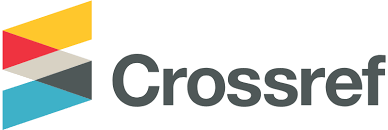Copula-Based Blind Detection of Copy-Move Image Forgery: A Robust Mutual Information Approach
DOI:
https://doi.org/10.32734/jormtt.v7i1.20520Keywords:
Copula, Copy-Move Forgery, Statistical DependencyAbstract
Copula functions are powerful statistical tools for modeling the dependency structure between random variables and have been widely applied in domains such as finance, oceanography, and hydrology. However, their application in image processing, particularly for image forgery detection, remains underexplored. This study proposes a novel blind copy-move forgery detection algorithm based on copula-based mutual information, which evaluates statistical dependencies between overlapping image blocks. By leveraging copula theory, the method accurately identifies duplicated regions within a single image without requiring prior knowledge or external references. Experimental results on the CoMoFoD dataset demonstrate that the proposed method achieves high precision, recall, and F1-scores across various manipulation types, including translation, scaling, and rotation, and shows resilience to post-processing operations such as JPEG compression, blurring, noise, and color reduction. Comparative analysis reveals that the copula-based approach outperforms classical methods such as SIFT, SURF, and DWT-SVD. In addition to quantitative performance, qualitative visualizations confirm that the algorithm effectively localizes forged regions in complex scenes with minimal false detections. These findings highlight the potential of copula functions as a robust and efficient framework for digital image forensics.
Downloads
Downloads
Published
How to Cite
Issue
Section
License
Copyright (c) 2025 Journal of Research in Mathematics Trends and Technology

This work is licensed under a Creative Commons Attribution-ShareAlike 4.0 International License.
Authors submitting a manuscript do so on the understanding that if accepted for publication, copyright of the article shall be assigned to Journal of Research in Mathematics Trends and Technology (JoRMTT) and Faculty of Mathematics and Natural Sciences as well as TALENTA Publisher Universitas Sumatera Utara as publisher of the journal.
Authors still retain the rights to use and share the published articles without written permission from JoRMTT, as long as they follow the Creative Commons Licensing Terms as set forth by Creative Commons. Authors responsible to obtain the license or related copyright issues in their works. JoRMTT shall be released of any liabilities should any problems arise due to authors errors in this matter.
Authors permit JoRMTT to publish and provide the manuscripts in all forms and media for the purpose of publication and dissemination.
JoRMTT will follow COPE Code of Conduct and Best Practice Guidelines for Journal Editors to protect the research results and takes allegations of any infringements, plagiarisms, ethical issues, and frauds should those issues arise. The manuscript is attributed as authors' work, and are properly identified.
The Copyright Transfer Form can be downloaded here.
The copyright form should be signed originally and sent to the Editorial Office in the form of original mail or scanned document.
Users are free to:
- Share (copy and redistribute the material in any medium or format)
- Adapt (remix, transform, and build upon the material)
under the following terms:
- Attribution (must give appropriate credit, provide a link to the license, and indicate if changes were made. You may do so in any reasonable manner, but not in any way that suggests the licensor endorses you or your use)
- NonCommercial (may not use the material for commercial purposes)
- ShareAlike (If you remix, transform, or build upon the material, you must distribute your contributions under the same license as the original)
- No additional restrictions (You may not apply legal terms or technological measures that legally restrict others from doing anything the license permits)
Notices:
You do not have to comply with the license for elements of the material in the public domain or where your use is permitted by an applicable exception or limitation.
No warranties are given. The license may not give you all of the permissions necessary for your intended use. For example, other rights such as publicity, privacy, or moral rights may limit how you use the material.













